Features of planting Tibetan raspberries and rules for caring for the plant
Few people grow Tibetan raspberries in our country. Despite long-term fruiting, undemanding soil and even beautiful berries with a peculiar taste of raspberries and strawberries, this plant has not received worthy recognition among Russian gardeners. But in the countries of Europe they love and appreciate this culture, which is grown not only because of the delicious fruits, but also because of the decorative foliage. Planting and caring for Tibetan raspberries is not much different from similar activities for growing traditional species of this plant. It multiplies easily, is not afraid of frost, loves moist, not too acidic soils and bears fruit from early July to late autumn.
Description of the plant
"Tibetan raspberry" is just one of the names of this interesting plant, called "seductive raspberry" in biology. In various places it is known as strawberry, rose-leaved or rosaline, strawberry-raspberry.
Experts say that Siberia is the birthplace of this plant. It was from there, from the northern latitudes, that raspberry seedlings were brought to the Baltic states in the 19th century.
The raspberry bushes are about 60 cm high, consisting of thin prickly shoots and outwardly resembling blackberry thickets. The rough, corrugated leaves of a light green color have a jagged edge and are glued like a plaster. The tops of the shoots end in inflorescences similar in structure to strawberry flowers. On some shoots, flower stalks can appear from axillary buds.
Tibetan raspberries are large (up to 5 cm in diameter), red or coral in color, empty inside, sourish in taste. The rhizome is actively growing, and if you do not limit the growing area, the plant will quickly fill the entire garden plot.
There are several differences between rosaline and traditional raspberries, despite the fact that both plants belong to the same genus.
- In Tibetan raspberries, before the onset of frost, the green part completely dies off, that is, fruiting occurs only on one-year-old shoots.
- The berries are arranged one by one, not collected in a brush.
- Outwardly, the fruit resembles a strawberry, but the attachment to the stem is like a raspberry.
- Long fruiting period. Raspberry-strawberries bloom and bear fruit from early July until the onset of cold weather.
One of the biological features of this entertaining culture is the simultaneous flowering and fruiting.
How to plant Tibetan raspberries
It is better to plant Tibetan raspberries in the fall, from September 15 to the end of October. When buying seedlings, you should carefully examine the trunk and root system. If there is any damage on the young shoot, the leaves are twisted and turn yellow, such a plant may not take root.
For planting raspberries, fertile soils with a normal level of acidity are chosen. To improve the composition of the soil, one bucket of peat and manure is introduced into the planting pit. It is better to take a place for a raspberry tree on the sunny side of the site, although the plant also tolerates partial shade well.
Important!
When choosing a planting site for Tibetan raspberries, it is necessary to avoid recesses and depressions in which melt snow lasts for a long time and rainwater accumulates.
Plants are planted farther from each other, the distance between the bushes should be at least 50 cm. After two or three years, the entire area will be covered with dense thickets of raspberries and a good harvest can be collected.
The roots of Tibetan raspberries are growing at an incredible rate. Therefore, around the raspberry tree, sheets of slate or iron should be dug in, deepening the fence into the ground at least half a meter.
Care
Tibetan raspberries, like other varieties of this culture, are very unpretentious and do not require much effort and time to care. However, in order to get a good harvest, you need to know and take into account the cultivation characteristics inherent in this particular plant.
- Watering
Raspberries do not tolerate drying out of the soil, and therefore watering is not required only in a rainy summer. With normal precipitation and in dry summers, plants should be watered regularly at the rate of 10 liters of water per 1 sq. m landings. In dry hot weather, in addition to root watering, it is advisable to use also rain spraying.
- Top dressing
Plants are fed twice a year - in autumn and in spring. In the autumn period, after the completion of fruiting, potassium sulfide is introduced into the soil. This fertilizer is sold in powder form, so you just have to sprinkle it under the bushes.
In the spring, as soon as the last snow melts, the soil in the raspberry tree is fertilized with ammonium sulfate. Fertilizer granules are laid out between the plants and sprinkled with humus, which will serve as a mulching material.
- Loosening
The roots of Tibetan raspberry bushes are located near the surface of the earth. Therefore, it is better to loosen the soil between the bushes and remove the weed by hand, and very carefully.
Important!
Tibetan raspberry shoots are studded with sharp thorns that can pierce or scratch the skin. All work in the raspberry plant should be carried out with thick gloves.
- Preparing for winter
Strawberry raspberries do not require special shelter for the winter. In late autumn, with the onset of the first cold weather, the green part of the plants dies off. It remains only to trim the bushes, leaving branches 5 cm long, and cover the raspberry with earth. In this form, the shrub will survive the most severe frosts.
Reproduction of Tibetan raspberries
Propagation of strawberry raspberries can be carried out in three ways: cuttings, root shoots and seeds.
- Cuttings
In the fall, after the harvest is fully harvested, a raspberry bush is dug up and divided into several cuttings so that one bud remains on each. The cuttings are planted in pre-prepared pits, the upper part of the stem is cut to 3 cm and left to grow the root system. In the spring, rooted cuttings are planted in a permanent place.
- Root processes
Mature plants produce many young growth. The process is dug out with a sharp shovel along with a part of the rhizome and transplanted to another place. This method of reproduction is used in the spring, while the plant has not entered the phase of active growth, or in the fall, after the end of fruiting.
- Seeds
The method of reproduction of Tibetan raspberries by seeds is considered the most laborious and is used only when it is impossible to get seedlings or parts of the rhizome of the plant.
The seeds can be purchased or extracted from overripe berries. Before planting seeds in the ground, they are kept for about a month in the refrigerator, buried in the sand for 2-3 mm. Stratification is necessary to improve seed germination.
Then the seeds are planted in a container and kept at a temperature of 20-25 ° C, constantly moistening the soil. The first shoots will appear no earlier than a month later.
Diseases and pests
Tibetan raspberry bushes can become prey for harmful insects or suffer from fungal or viral diseases.
Here are the most common pests and ailments to be wary of when growing this unpretentious berry.
- Raspberry beetle - eats fruits and green leaves.
- Weevil - eats flowers, destroys leaves.
- Anthracnose is a fungal disease, as evidenced by the appearance of light brown areas on the stem and leaves of the plant.
- Root cancer is a bacterial disease in which the root system of young plants dies off.
For pest control use DDT, "Karbofos", Bordeaux liquid. The affected parts of the plant are cut off and burned or taken out of the site.
The cultivation of Tibetan raspberries does not require special skills and knowledge.Therefore, even a novice gardener will be able to grow this beautiful berry with an unusual double taste, from which compotes and jams are prepared for the winter. In addition, landscape designers love to use decorative bushes of strawberry raspberries in combination with conifers.
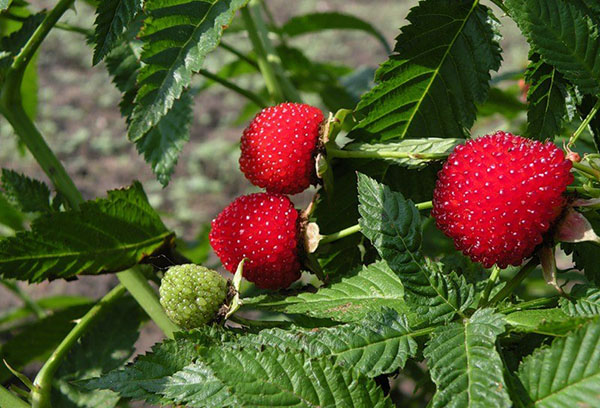



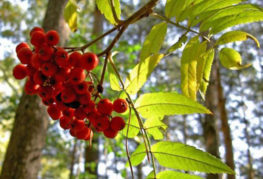
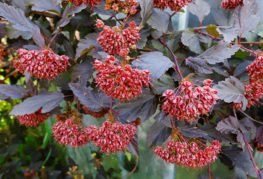
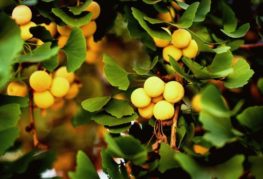
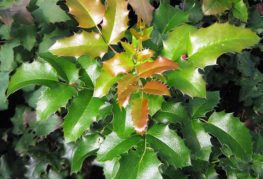
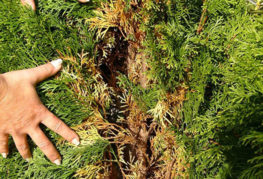
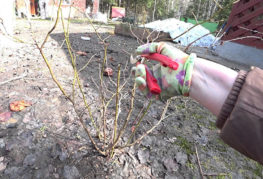
and will be published shortly.